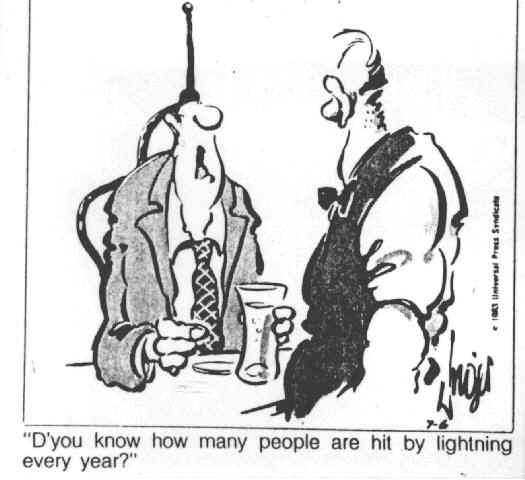Summary
- Problem with thrombosis (blood clotting) have occurred following vaccinations with the Astra Zeneca vaccine and EU governments have reacted by postponing its roll out. This is not good decision making.
- Problems with thrombosis may be due to chance, and this, so far is the view of the regulatory bodies and the WHO.
- Delays in vaccination and increased hesitancy will also be associated with problems in nations whose health care systems continue to struggle with COVID 19 cases.
Introduction
The Astra-Zeneca Oxford vaccine roll out has been suspended in a number of European countries while investigating cases of blood clots which have occurred shortly after the vaccine. Sadly, one of these was fatal and Norway, Denmark, Iceland the Netherlands and Ireland, followed within days by Germany Italy and France, have suspended use of the vaccine. Austria and Spain have suspended the use of the particular batch associated with the blood clots.

Curiously, despite having vaccinated over 24 million people in the UK, and 17 million with the AZO vaccine (compared to the EU 5 million) there have been no signals of any increase in problems, indeed there are less report s of thrombosis in those vaccinated. UK regulators have a Yellow Card reporting system, where side effects of drugs and vaccines can be reported. While far from perfect, in the case of thrombosis and vaccination it really should work as cases of thrombosis are not often missed, and always recorded.
Why this matters
This matters, for one of two reasons. If the vaccine does increases the risk of thrombosis, it will be critical to determine the degree of risk relative to the known and substantial risk of thrombosis with COVID19 together with the risk of infection to those seeking vaccination. Rare events and their incidence can be difficult to quantify between different populations and it will also be important to know if there are any particular identifiable risk factors in people who have been affected by clotting disorders.
The fact that this effect didn’t appear in clinical trials, or in the UK so far suggests that the risk, it is exists, is very small indeed. If there is no increase in risk, then the saga provided a lesson to the European governments on how not to roll a vaccine out in the real world and the importance of avoiding over-cautious decision making.
Risk in the real world
The European Medicines Agency (EMA) and the WHO have been offered reassurance which national public health bodies and their governments have ignored in adopting what some of them call a “super-cautious’ approach. So far there have been 30 cases of blood clots reported in 5 million people in the EU who have had the first jab. On first viewing the importance of this is not hard to work out. Clots affects about 1 person in a 1000 per year. So in 5 million people you would expect about 100 blood clots to occur in any week, and 14 every day with or without a vaccine. In these terms, the 30 or so reported cases may not be a cause for concern.
There has been reports of two fatalities in Norway, one a week and one ten days after the vaccine, after Norway vaccinated 130,000 people. Norway is perhaps, with New Zealand, a world leader in pandemic management, so perhaps their caution is more reasonable than nations with a heavy caseload for who the risk benefit balance is different.
Reported cases of cerebral venous thrombosis are more of a worry. These take place at a background rate of 3-4 cases per million adults per year. For the vaccine population of 22 million, there would be 60 cases a year, or about one in any given week, with or without the vaccine. For rare conditions such as this, doubling the risk would increase the chance of it happening to 6-9 in a million and needs, again to be weighed against the benefits of the vaccine to the individual and the community.
The same reasoning applies to cases of heart attacks and strokes in the days after a vaccination, as well as any other relatively common illness. For example there are 230 people out of every 100,000 having their first stroke each year – that is 12,500 per 5 million people which equates to 34 people in the EU vaccinated population having a stroke the day after the jab – or on any day. There are 450 deaths a day from heart problems in the UK and some of these will take place shortly after vaccination too.

We have seen this problem already with transverse myelitis, an inflammation of the spinal cord and of particular interest to anyone with MS. This affected one person in the Oxford trial having the vaccine and resulted in a delay in the trial until is was found that it was no more common in those vaccinated than in the control group or the general population. Further, there are also neurological complications such as transverse myelitis due to the real infection. This means that real side effects of the vaccine should be compared to the real side effect of the illness. Despite adverse side effects, vaccines usually win.
Too much caution can be harmful too…
Caution may be a luxury when infection rates and deaths are low, as in Ireland where their second wave is waning, but for other counties, Italy, France and Austria in particular, suspension of vaccination will have consequences. If a person has a vaccination cancelled, or becomes hesitant due to the negative publicity and goes on to suffer from COVID19 while unvaccinated, then this real harm caused by ‘super-caution’ will also need to be put into the equation.
Vaccine misinformation and disinformation will now certainly increase. I already noted how the Mercola website is asking visitors to its site to report absolutely ANYTHING that happens after a vaccination and reporting them as ‘vaccine side effects’ to bolster their own anti-vaccination credentials. Their dishonest reports included detailing, for example, a recently vaccinated young woman who sadly died after a balloon like swelling in her blood vessel called an aneurysm ruptured, for which there can be no conceivable link whatever to the vaccine. It’s akin to being struck by lightening – which will also happen after vaccination.
Do no harm?
The medical Maxim on “Do No Harm” will again be shown to be little more than wishful thinking. Medical interventions seek to do more good than harm. Harm though, still exists. This balance is particularly important with vaccines, as they are given to large numbers of well people and if given to millions, there will be inevitable be thousands of side effects experienced by people, while not having an illness not something directly perceived.

Political and science
I am not in the least surprised by these events, indeed knew this would happen. Vaccinating tens then hundreds of millions of people, in particular when most of them are old, vulnerable or already have other illnesses, will be forever associated with events taking place in the following days and weeks. Association is not cause, and many are far more likely to be co-incidence than caused by the vaccine. The next few days are going to be very interesting for the future of the pandemic and vaccination.
What worries me is the halt in the vaccination programme and the effect on hesitancy which has been falling despite the online misinformation campaign by vocal minority. For politicians who claim to be following science this is troubling. The reassurances from the EMA, the WHO and others should guide them – perhaps they should trust the regulatory bodies who have been set up to do exactly this job.. It would be helpful if they did not only follow the science, but actually stood up for it. Im glad to see that the UK is not following in their footsteps.

The EMA are meeting today, and will be reporting their findings later in the week, and it may be that they do highlight real but rare risks. It looks like they may not.
Perhaps when the dust has settled, we will settle into a more healthy appreciation of where we are with COVID and vaccination. Each individual will be able to find out more about side effects if and when they emerge and be aware of the risks of vaccination and how they stack up against the risk of the illness. For the elderly, the balance is fairly clear when you look at te risk of a significant illness and death. For the young, they will need to consider their chances of long COVID against the potential risk of rare side effects. If risks in the young become evident, it will certainly suggest that vaccination might be better used in vulnerable groups only. However, the Norway cases are in health workers, who are at an increased risk from COVID19 too. It is not an easy matter.
For every medical intervention there is benefit to be gained and risks to be run, but this applies just as much to political decisions. The risk profile of so much normal activity is subject to less scrutiny. Every drop of alcohol we drink, every puff of tobacco we smoke , or lungful of polluted air we breathe, and every mouthful of poisonous food we eat carries significant risk and adverse effects.
If Governments are keen on the applying the precautionary principle consistently to protect health, then traffic in towns must be urgently reduced to prevent the thousands of deaths they cause, international travel must be curtailed in an effort to slow down climate change and limit the spread of pandemics, tobacco banned, alcohol taxed and the threat of climate change properly addressed. A bit more of the precautionary principle would help here – fingers crossed for that!
I will wait for the judgements from the EMA this Thursday and I feel sure that we will then know more then about how the vaccine behaves in the real world, and how political thinking still lags some way behind science. It needs to catch up and fast.
From the cradle to the grave, life remains a risky business.